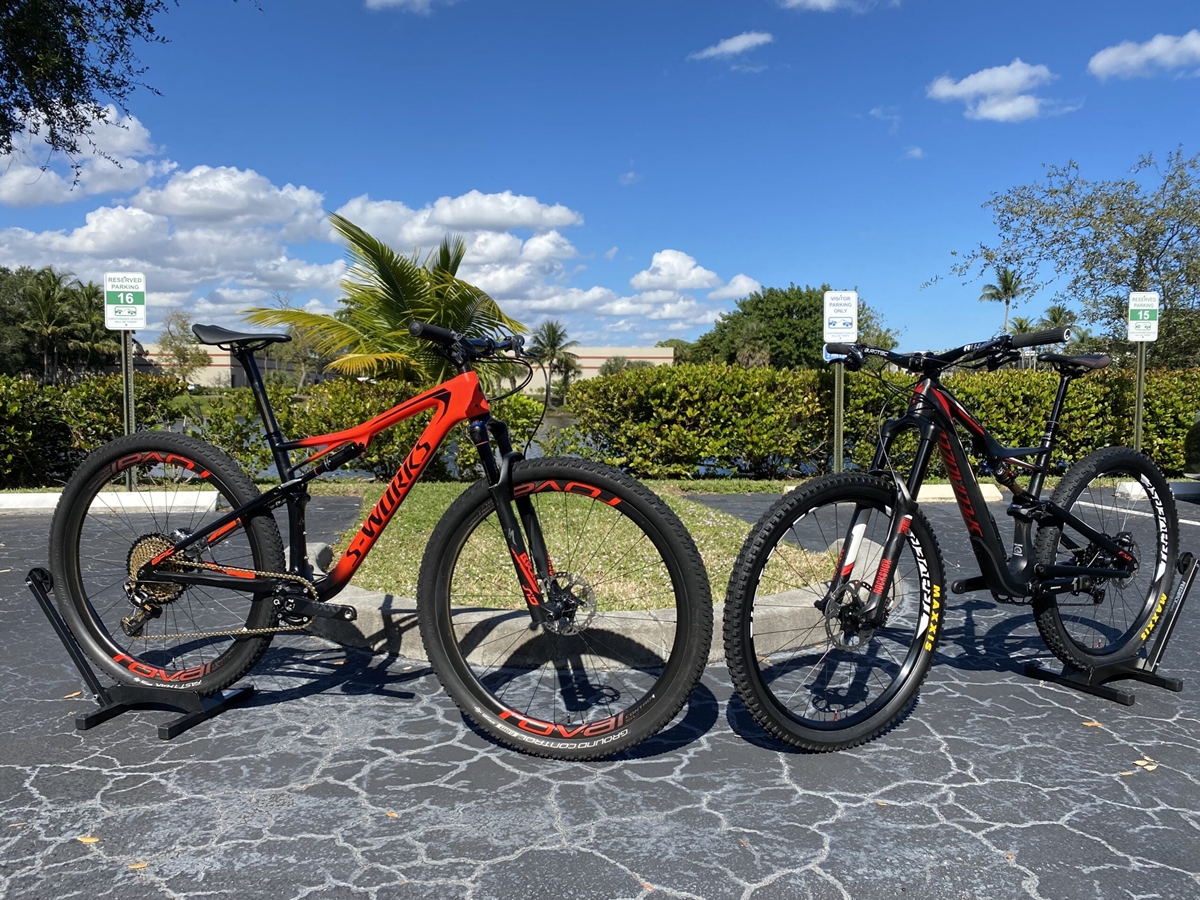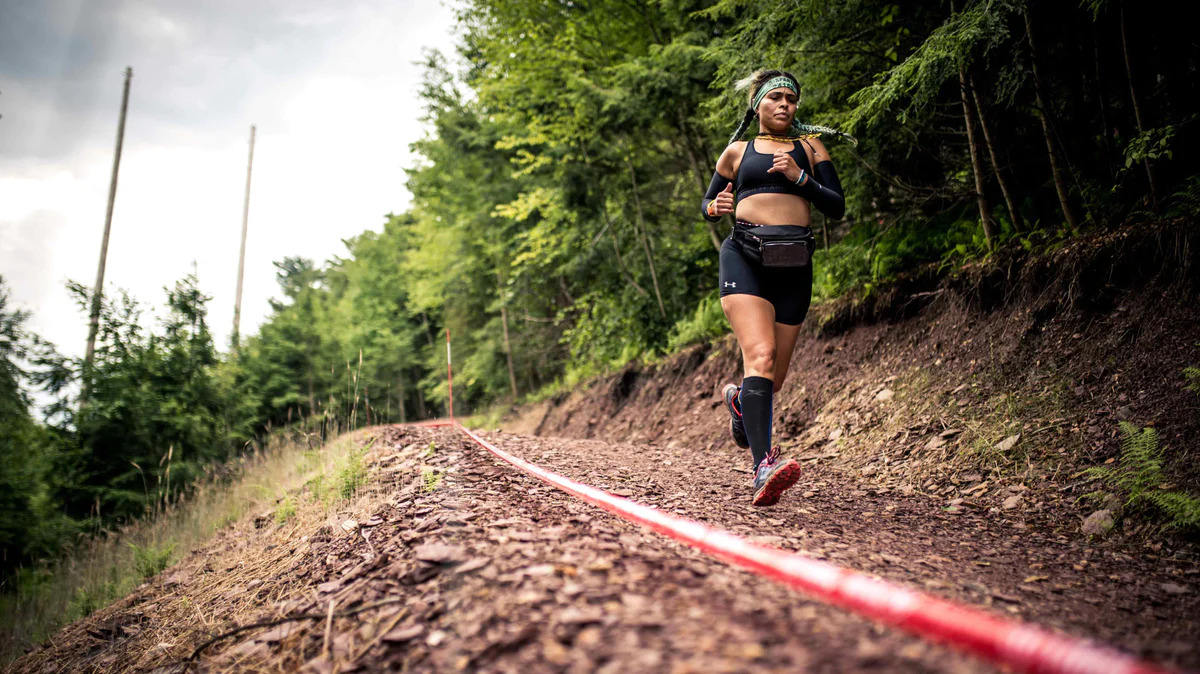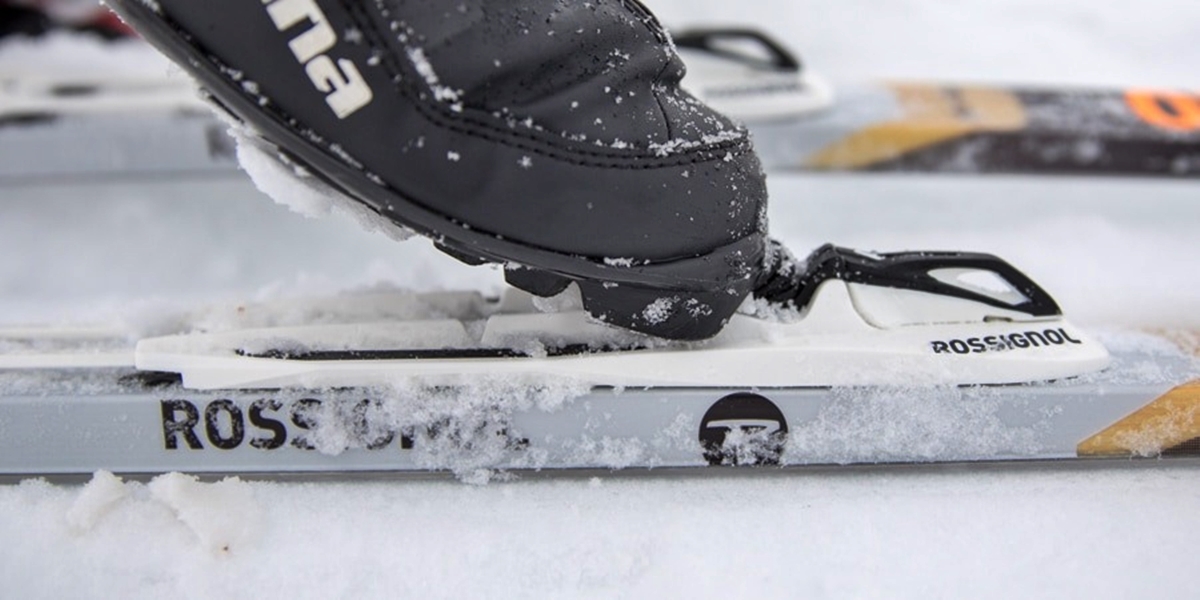

Featured
What Is A Trail Bike Vs Cross Country
Modified: August 18, 2023
Discover the difference between a trail bike and cross country bike. Read our featured article to find the right bike for your off-road adventures.
Introduction
Welcome to the world of mountain biking, where there are various disciplines and styles to choose from. Two popular categories within this realm are trail bikes and cross country bikes. While both are designed for off-road riding, they have distinct features and purposes that set them apart.
In this article, we will delve into the definitions of trail bikes and cross country bikes. We will explore the key differences in frame design, suspension systems, tire size and tread patterns, as well as components. Additionally, we will discuss the specific riding styles these bikes are best suited for.
Whether you’re a seasoned rider looking to upgrade your current bike or a beginner trying to decide which type of bike to invest in, understanding the characteristics and variances between trail bikes and cross country bikes is crucial. By diving into the details, you’ll be equipped with the knowledge to make an informed decision and find the perfect bike for your riding preferences and skill level.
So, let’s jump in and explore the exciting world of trail bikes versus cross country bikes!
Definition of Trail Bikes
Trail bikes are a versatile category of mountain bikes that are designed to handle a wide range of terrain and riding conditions. They strike a balance between uphill efficiency and downhill performance, making them ideal for riders who enjoy tackling a variety of trails. In essence, trail bikes are the jack-of-all-trades in the mountain biking world.
One defining characteristic of trail bikes is their geometry. They typically feature a longer wheelbase and slacker head tube angle compared to cross country bikes. This provides stability and control when descending steep and technical trails. However, unlike downhill bikes, trail bikes are still designed to offer a comfortable and efficient pedaling position for climbing.
Another notable feature of trail bikes is their suspension travel. They typically have a moderate amount of travel, ranging from 120mm to 150mm. This allows them to absorb bumps and impact from rough trails, providing a smooth and enjoyable ride. The suspension system on trail bikes is often adjustable, allowing riders to fine-tune the feel and responsiveness based on personal preference and trail conditions.
Trail bikes also come equipped with components and features that enhance their versatility. They usually have wider handlebars for improved control and maneuverability. Additionally, they may have dropper posts, which allow riders to lower their saddle on the fly for better clearance and stability during descents.
Overall, trail bikes are designed to be your go-to option for exploring a variety of trails. Whether you’re tackling technical descents or grinding out long and challenging climbs, a trail bike will provide the agility, comfort, and confidence you need to conquer any terrain.
Definition of Cross Country Bikes
Cross country bikes, often abbreviated as XC bikes, are specifically designed for riders who are looking to maximize speed and efficiency on a range of terrain. They are favored by endurance racers and riders who enjoy long-distance riding and challenging climbs. Cross country bikes are known for their lightweight construction and nimble handling.
The geometry of cross country bikes is geared towards optimizing power transfer and maneuverability. They typically have a shorter wheelbase and steeper head tube angle compared to trail bikes. This results in a more upright riding position, allowing riders to generate more power when pedaling and maintain control in tight turns and technical sections of the trail.
One of the defining characteristics of cross country bikes is their suspension travel. Unlike trail bikes, cross country bikes have minimal suspension travel, typically ranging from 80mm to 100mm. This reduced travel helps to minimize energy loss during pedaling and reduces weight, making these bikes exceptionally efficient on climbs and smooth trails.
Cross country bikes also feature components that prioritize efficiency and weight savings. They often have narrower handlebars for improved aerodynamics and reduced wind resistance. The gearing on cross country bikes is typically designed for optimal climbing ability, with a wider range of gears to tackle steep inclines and maintain a high pedaling cadence.
Overall, cross country bikes are built for speed, endurance, and efficient climbing. Whether you’re participating in a cross country race or embarking on a long-distance adventure, a cross country bike will provide you with the lightweight and agile platform necessary to conquer challenging terrain and push your limits.
Differences in Frame Design
Trail bikes and cross country bikes have distinct frame designs that cater to their specific riding characteristics. These differences impact the overall handling, stability, and performance of each bike.
Trail bikes typically feature a more relaxed and stable frame geometry. The wheelbase is longer, which provides increased stability at high speeds and greater control when navigating technical terrain. The head tube angle is slacker, which improves descending capabilities and enhances confidence on steep descents. Additionally, trail bikes often have a shorter reach and a higher bottom bracket height, enabling riders to easily maneuver through tight corners and obstacles.
In contrast, cross country bikes have a more aggressive frame geometry aimed at maximizing speed and efficiency. The wheelbase is shorter, resulting in snappier and more responsive handling. The head tube angle is steeper, improving climbing performance and ensuring precise steering. Cross country bikes typically have a longer reach and a lower bottom bracket height to enhance stability and cornering ability on fast, flowy trails.
Another notable difference in frame design is the construction material used. Trail bikes often utilize aluminum or carbon fiber frames, providing a good balance between durability and weight savings. Cross country bikes, on the other hand, prioritize weight reduction and commonly feature lightweight carbon fiber frames to maximize performance on climbs.
It’s important to note that individual bike models within each category may have variations in frame design to cater to specific rider preferences or terrain requirements. Understanding the frame design differences between trail bikes and cross country bikes can help you choose the bike that best aligns with your riding style and desired performance.
Suspension Systems Comparison
The suspension system plays a vital role in determining how a mountain bike performs and handles on various terrains. Both trail bikes and cross country bikes feature suspension systems, but there are notable differences in their design and capabilities.
Trail bikes typically have a longer travel suspension system, ranging from 120mm to 150mm, designed to handle more aggressive and technical trails. This extra travel allows the bike to absorb larger impacts and bumps, providing a smoother ride and enhanced control in rough terrain. Trail bikes often utilize a full-suspension setup, with both front and rear suspension, to maximize traction and maneuverability.
Cross country bikes, on the other hand, have a shorter travel suspension system, typically ranging from 80mm to 100mm. The focus of the suspension on cross country bikes is to minimize energy loss during pedaling and maintain efficiency on smooth trails and climbs. As a result, cross country bikes often have a lighter and simpler suspension setup, with a rigid or hardtail frame being a common choice for riders seeking maximum efficiency and weight reduction.
It’s worth noting that some cross country bikes may have a full-suspension setup, known as a dual suspension or softail frame design. This provides a small amount of rear suspension travel for added comfort and control without sacrificing efficiency.
When it comes to adjusting the suspension, both trail bikes and cross country bikes offer various customization options. Riders can adjust the suspension sag, rebound, and compression to fine-tune the bike’s performance based on personal preference and trail conditions. Some trail bikes may also feature additional suspension modes, such as a lockout or climb mode, to optimize pedaling efficiency during ascents.
Ultimately, the suspension system on a mountain bike is a crucial factor to consider when choosing between a trail bike and a cross country bike. Understanding the amount of travel needed for your riding style and the terrain you plan to tackle will help you make an informed decision.
Tire Size and Tread Pattern Variations
Tire size and tread pattern are important considerations when it comes to the performance and capabilities of mountain bikes. Both trail bikes and cross country bikes feature variations in tire size and tread patterns to cater to their specific riding styles and terrain.
Trail bikes often come equipped with wider tires compared to cross country bikes. The tire size typically ranges from 2.3 inches to 2.6 inches or even wider. The wider tire offers more stability and traction on technical and loose terrain, providing confidence and control to riders when descending steep slopes and navigating challenging obstacles. The tread patterns on trail bike tires are designed to provide a good balance between grip and rolling resistance, with aggressive knobs and deeper sipes for improved traction.
In contrast, cross country bikes generally feature narrower tires, ranging from 2.0 inches to 2.3 inches. The narrower tire profile reduces rolling resistance and weight, allowing riders to maintain a higher speed on smoother and flatter trails. The tread patterns on cross country bike tires prioritize low rolling resistance, often featuring shallower knobs and a smoother center tread to maximize efficiency on climbs and flat sections of the trail.
It’s important to note that tire size and tread pattern are not the sole factors determining the performance of a mountain bike. The tire pressure also plays a crucial role. Lower tire pressures can provide better traction and control, especially on rough trails, while higher tire pressures reduce rolling resistance and minimize the risk of pinch flats.
Ultimately, choosing the right tire size and tread pattern for your mountain bike depends on your riding preferences, the type of trails you frequent, and the conditions you expect to encounter. Be sure to consider the terrain and surfaces you will be riding on to ensure that your bike’s tires can handle the demands of your chosen riding style.
Components Variances
The components of a mountain bike play a crucial role in its overall performance, durability, and functionality. Trail bikes and cross country bikes have variations in components to cater to their respective riding styles and demands.
Trail bikes typically come equipped with components that prioritize durability and performance in demanding situations. They often have stronger and more robust drivetrains, featuring components like wide-range cassettes and clutched rear derailleurs to ensure smooth and reliable shifting even under high torque and rough trail conditions. Trail bikes may also have stronger and more powerful hydraulic disc brakes to provide reliable stopping power in steep and technical descents.
For suspension components, trail bikes often feature larger diameter fork stanchions and shocks with increased travel to handle rough trails and absorb bigger impacts. This allows for better control and a more comfortable ride when tackling challenging terrain. Additionally, trail bikes may have wider handlebars for increased stability and maneuverability, as well as dropper posts to adjust saddle height on the fly for better clearance and control during descents.
Cross country bikes, on the other hand, prioritize weight savings and efficiency. They often feature lighter drivetrains with narrower gear ranges to minimize weight and maximize pedaling efficiency on climbs and smooth trails. The components on cross country bikes may also have a simpler design compared to trail bikes, with fewer gears and a focus on lightweight materials to optimize speed and performance.
When it comes to suspension components, cross country bikes have shorter travel forks and shocks to reduce weight and increase pedaling efficiency. The focus is to maintain traction and control without sacrificing energy transfer. Cross country bikes may also have narrower handlebars for improved aerodynamics and reduced wind resistance.
Ultimately, the component variations between trail bikes and cross country bikes reflect the specific riding styles and demands they cater to. Consider your riding priorities, including durability, performance, and weight savings, when choosing the bike with the components that best align with your preferences and intended usage.
Trail Riding vs Cross Country Riding
Trail riding and cross country riding are two distinct styles of mountain biking, each offering unique experiences and challenges. Understanding the differences between these two styles can help you determine which one aligns more closely with your riding preferences and goals.
Trail riding is all about exploring a variety of trails, from flowing singletracks to technical descents. Trail bikes are designed to handle a wide range of terrain and perform well in different riding situations. Trail riders seek adventure and enjoy the thrill of tackling diverse challenges, such as steep climbs, rocky sections, and tight switchbacks. They value the versatility and capability of trail bikes to provide stability, control, and comfort in various trail conditions.
Cross country riding, on the other hand, is focused on speed, endurance, and efficiency. Cross country riders are often attracted to long-distance rides, challenging climbs, and racing. The emphasis is on maximizing pedaling efficiency while maintaining control and agility. Cross country bikes are designed to be lightweight and nimble, allowing riders to cover long distances with speed and agility. Cross country riders prioritize climbing ability and value the lightweight components, efficient drivetrains, and minimalist designs found in cross country bikes.
While trail riding is more suited for riders who seek versatility, technical challenges, and enjoyment of the entire ride, cross country riding is geared towards riders who prioritize speed, efficiency, and the thrill of conquering long stretches of terrain. Both styles require a different set of skills, physical fitness levels, and mental focus.
It’s important to note that the distinction between trail riding and cross country riding is not strictly black and white. There is often an overlap, and many riders enjoy a combination of both styles. Some riders may even adapt their trail bikes or cross country bikes to better suit their specific riding preferences or local trail conditions.
Ultimately, whether you choose trail riding or cross country riding, or a blend of both, it’s crucial to consider your personal preferences, fitness levels, and the type of trails you’ll be riding on. Both styles offer rewarding experiences and opportunities to explore the great outdoors on two wheels.
Conclusion
In conclusion, trail bikes and cross country bikes are two distinct categories within the world of mountain biking. Understanding the differences between these bikes can help you make an informed decision when selecting the right bike for your riding style and preferences.
Trail bikes are versatile and designed to handle a variety of terrain. They excel in providing stability, control, and comfort on technical descents while maintaining efficiency on climbs. With their longer travel suspension, wider tires, and durable components, trail bikes are ideal for riders who enjoy exploring diverse trails and tackling challenging obstacles.
On the other hand, cross country bikes prioritize speed, endurance, and efficiency. With their lighter weight, narrower tires, and focused geometry, these bikes offer exceptional climbing abilities and maximize pedaling efficiency. Cross country bikes are favored by riders who enjoy long-distance rides, endurance races, and fast-paced cross country riding.
It’s important to consider factors such as frame design, suspension systems, tire size, tread pattern, and components when choosing between trail bikes and cross country bikes. By understanding your riding style, preferences, and the type of terrain you’ll be encountering, you can select the bike that best suits your needs and enhances your riding experience.
Remember, trail riding and cross country riding offer unique adventures and challenges. Whether you prefer the versatility and technical capabilities of a trail bike or the speed and efficiency of a cross country bike, both styles offer opportunities to explore the outdoors, improve your skills, and enjoy the excitement of riding on off-road trails.
So, get out there, choose your bike, and embark on your next mountain biking adventure!









